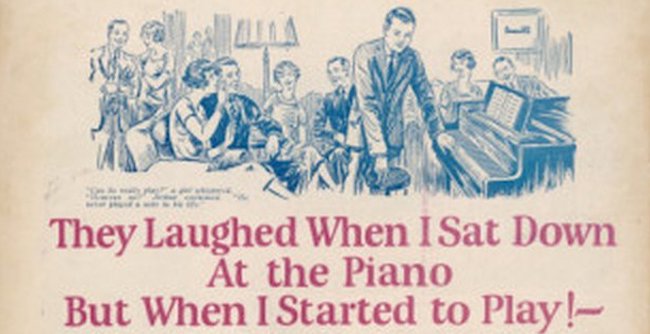
By Rex Hammock, CEO
Here are two quick stories about learning to play a musical instrument that illustrate the difference between marketing content used to close a transaction—and the kind used to create a lifelong relationship.
The first story is about John Caples, a legendary advertising copywriter and pioneer of scientific marketing research. His best-known copy was a 1926 long-form magazine ad written for the U.S. School of Music, a company that published books for learning to play the piano at home. The ad’s headline, “They laughed when I sat down at the piano—But when I started to play!” is often cited as one of the most effective advertising headlines of all time.
The second story is about Dr. Shinichi Suzuki, founder of the worldwide music education movement known as the Suzuki Method. Born in Japan in 1898, Suzuki’s family owned a violin factory. After World War II, he developed a method of teaching children to play the violin that helped his family’s business recover after being destroyed. Rather than focusing on selling violins to adults, the company began crafting violins for children and teaching them how to play. Dr. Suzuki developed a teaching method that starts out children as young as 4 years old, so as the child grows, larger and larger violins must be rented or purchased.
The Suzuki method not only became a means to sell parents violins for their children, but it also grew into a worldwide movement and community. It presents technical and musical concepts in a logical sequence, and the same method is now also used for teaching cello, flute and piano.
What do these two stories teach us about content marketing?
Have you ever heard of the U.S. School of Music? Probably not, as one of the most legendary ads of all time promoted a one-and-done transaction. “They laughed …” was a great ad that went viral, but the company’s method of piano teaching is long gone.
Both companies started out with a promise to teach people to play music, but U.S. School of Music viewed its goal as selling books. Suzuki’s goal was not selling books or even violins. Suzuki saw his goal as giving children a lifelong love of music and a means to build character.
Bottomline: Content can be used to generate a transaction, or content can be used to build a relationship. As the parent of two children who grew up using the Suzuki method, it’s easy for me to promote the approach that works best.
About Hammock Idea Email | This post is part of Hammock’s award-winning Idea Email series. Idea Emails are sent every other week and share one insightful marketing idea. Idea Email comes in two flavors: Original and Healthcare. To subscribe to the original Idea Email (general marketing ideas), click here . To subscribe to the Healthcare Idea Email (healthcare marketing ideas), click here.

